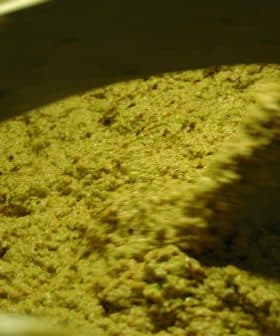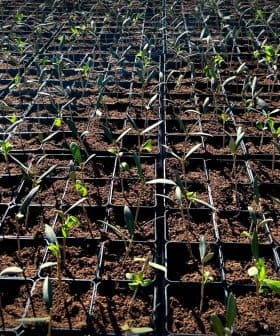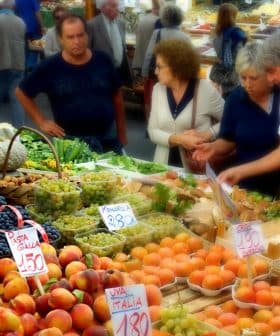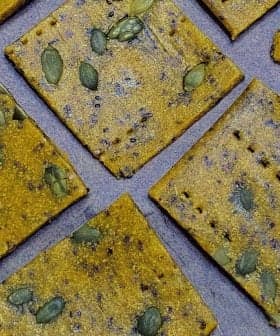New Twist on Traditional Olive Press
A Spanish company, Oleapure, has developed a new method for an ancient olive press that produces olive oil higher in antioxidants and with no harmful waste, allowing for a new premium category of olive oil called Oleaster. The new method involves a hydraulic press that applies force in two directions, increasing efficiency and antioxidant content, with potential health benefits being evaluated by researchers at Spanish universities.
A Spanish company has developed what it claims to be a “breakthrough innovation” for the ancient olive press that makes an olive oil higher in antioxidants and leaves no environmentally harmful waste.
According to a patent application by the company behind the project, Oleapure, its invention allows two directions of force to be applied within a hydraulic press — instead of the usual one — thus substantially increasing its efficiency and raising the content of active components beneficial to health, such as hydroxytyrosol, tyrosol, caffeic acid and oleocanthal.
From Seville, Oleapure scientific advisor Dr. Rafael de Lara told Olive Oil Times the new method produced an olive oil, Oleaster, which the company estimates to be nearly a third higher in antioxidants than most existing extra virgin olive oils, depending on the olive variety.
Compression favors antioxidant content
De Lara, a pharmaceutical chemist, said using a traditional press like the Romans used for olive oil was like making orange juice by squeezing an orange then straining out the juice. The now dominant decanter centrifuge process was like crushing the orange then spinning out the juice.
He said the company’s research suggested that the compression of olives in a traditional press — and to a greater degree in the Oleapure invention — allowed more of the phenolic compounds in the fruit’s flesh (the mesocarp) to bind with the oil globules than occurred with centrifugal systems, where the free oil Is separated immediately. These compounds are key to the antioxidant capacity and sensory quality of the resulting oil.
New olive products
De Lara said Oleaster could be the basis for a new premium category of olive oil. It has quite a strong taste — though this varies according to the olive varieties used — but would appeal as a health and gourmet product.

A byproduct of the new method was an olive juice containing no oil that is used to make a new concentrated extract, Oleasan. This “yet-to-be-defined” product is also rich in antioxidants highly prized in the health food and cosmetic industries.
Waste minimization the mother of invention
De Lara said he could not yet give more details about the press design except that it was an industrial secret involving “directional sequential compression.” “The hydraulic bi-directional press has been a breakthrough for us” he said.
Though conceptually simple, it involves engineering not available on the market. After successful trials of a pilot press a demonstration model is now being built in Seville and should be ready within a year.
De Lara said the design was fruit of earlier work on reducing the amount of olive oil production effluent — alpechín in Spanish — which has been a major environmental pollutant in Spain, particularly in Seville’s Guadaíra river valley.
Though more of a problem under what is known as the three-phase decanter centrifuge system, even the cleaner two phase system, which now predominates in Spain, produces some wastewater containing oil.
Among the differentiating factors of the new process are that its only waste products – olive skin, stones and some pulp — are environmentally inert and can be re-used, such as for fuel in the case of the stone remains, de Lara said.
Oleapure — which is seeking partners to take the project forward — boasts on its website that in comparison with current methods, its delivers “a higher quality olive oil with the same yield and productions costs” and “zero residue.”
Health claims under evaluation
University researchers forming part of a joint private-public project with funding from the Spanish government are now evaluating Oleaster and Oleasan and their potential health benefits.
At the University Pablo de Olavide, scientists are studying the products’ content of polyphenols, such as resveratrol, and of antioxidants, including coenzyme Q10, vitamin C and vitamin E, and the impact of their ingestion by mice.
“We’ll have to wait until the end of the project in 2013 to know if we have a new olive oil that is much healthier and offers increased antioxidant and anti-inflammatory capacity and improves lipid and proteomic profiles,” the university said in a press release.
Meanwhile, researchers in the pharmacology department of the University of Seville are evaluating the products’ cardiovascular benefits and potential use for hypertension and atherosclerosis.
At the European Atherosclerosis Society Congress held in Italy in May, scientists from that university presented a poster titled “New extra virgin olive oil (Oleaster®) or olive wastewaters extract (Oleasan) improved endothelial dysfunction and atherosclerotic plaques of ApoE mice.”
Sources:
Oleapure
University Pablo de Olavide press release (in Spanish)
Congress poster abstract, University of Seville Department of Pharmacology









